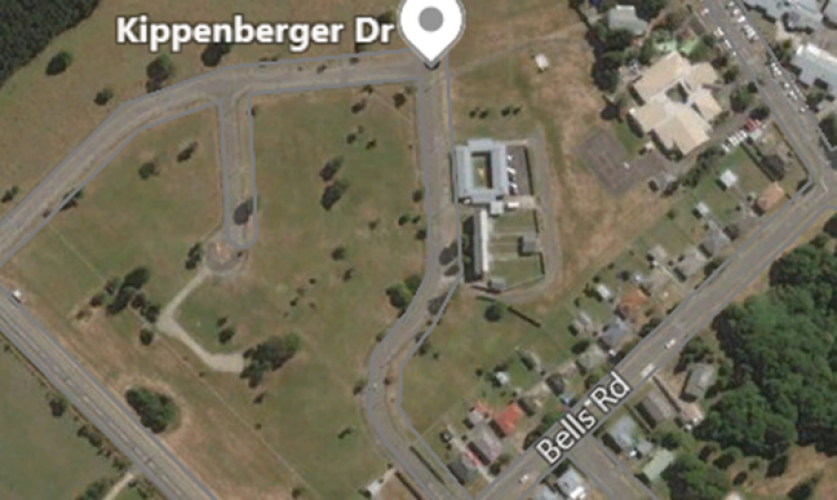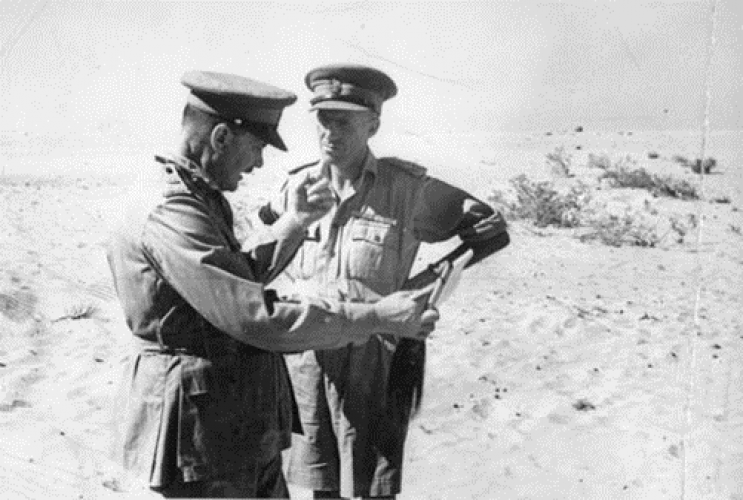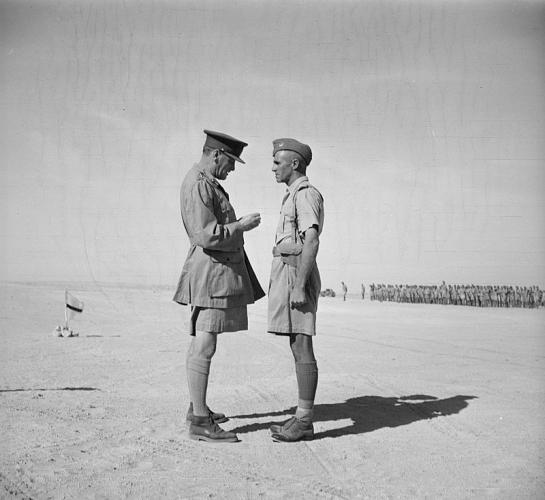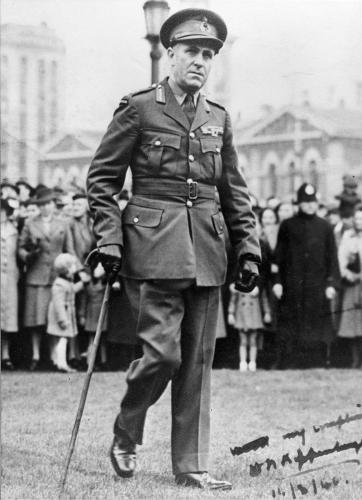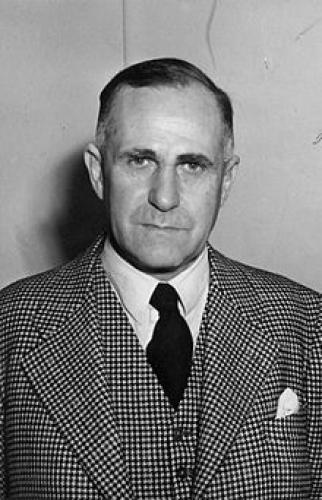263 Kippenberger Drive LMC Palmerston Nth, aerial view 2018
Reason for the name
This street was named in honour of Major General Sir Howard Karl Kippenberger, KBE, CB, DSO & Bar, ED, known as "Kip". He was an officer of the New Zealand Military Forces who served in the First and Second World Wars. Most streets within NZDF Camps and Bases are named in honour of prominent people, battles, campaigns, ships, aircraft and places creating a rich history of our military service.
Born in the Canterbury Region of New Zealand, Kippenberger joined the New Zealand Expeditionary Force (NZEF) in late 1915. He saw action in France on the Western Front, participating in the Battle of Flers-Courcelette. A serious wound in November 1916 saw him repatriated to New Zealand and discharged from the NZEF. He qualified as a solicitor in 1920 and worked in a legal practice in Rangiora. In 1924, he joined the Territorial Force and by 1936 had advanced in rank to lieutenant colonel.
Following the outbreak of the Second World War, Kippenberger was appointed to command the 20th Battalion. He led the battalion for two years, through the Battles of Greece and Crete as well as part of the North African Campaign before being promoted to brigadier and taking command of the 5th Infantry Brigade. The pinnacle of his military career was as commander of the 2nd New Zealand Division during the Italian Campaign. He was wounded on 3 March 1944 during the Battle of Monte Cassino when he stepped on a land mine. As a result of his wounds, he lost both of his feet. After recovery in England, during which he was fitted with artificial limbs, he helped prepare for and assisted in the repatriation of newly released New Zealand prisoners of war. In 1946, he was appointed Editor-in-Chief of New Zealand's largest-ever publishing project, the Official History of New Zealand in the Second World War 1939–45. He was still working on the project when he died on 5 May 1957 in Wellington.
Author: The Poppy Places Trust and Cherie Lawson
An important part of General Kippenberger’s career was spent in Italy and England.
Italy
At this stage of the war, the 2nd New Zealand Division was fighting in Italy as part of the British Eighth Army with the 5th Brigade poised to attack across the Sangro River in central Italy. On his arrival, Kippenberger conducted a survey of the terrain and recommended to Freyberg that the attack plan be modified to include an additional brigade, a recommendation Freyberg concurred with. The reorganised attack was successfully executed on the evening of 28 November with light casualties. The 2nd Division then attempted three times to capture the town of Orsogna. The second attack on the town of 7 December was the first to involve the 5th Brigade. Despite Kippenberger's brigade achieving all its objectives on the flank of the town, the attack was not successful. The failure of another brigade, tasked with capture of Orsogna itself, to achieve its goals left elements of the 5th Brigade exposed, and it had to partially withdraw.
A further attack involving the 5th Brigade was mounted on 14 December, and this also failed, despite armoured support. Kippenberger found the close fighting in the mountainous terrain in Italy to be in marked contrast to the open campaign of the deserts of North Africa. Despite this, he remained the best of the brigadiers of the division and was not afraid to voice his concerns when given difficult orders by his superiors. When the commander of British XIII Corps, Lieutenant General Miles C. Dempsey, ordered what Kippenberger regarded to be wasteful attacks on ground in front of the 5th Brigade, he was not pleased and twice voiced his concerns.
In early 1944, Freyberg was made commander of the New Zealand Corps, newly formed for the Battle of Monte Cassino, while Kippenberger was promoted to temporary major-general and made commander of the 2nd Division. This was the pinnacle of his military career.[46] The division had moved into the line around Cassino, replacing the U.S. 36th Infantry Division, which had been attacking the strongly defended German positions. The first attack by the New Zealanders on 17 February was unsuccessful despite the bombing of the Monte Cassino abbey, which Kippenberger supported. A second attack was planned for 20 February, but it was delayed by bad weather. On 2 March, Kippenberger climbed the slopes of nearby Mount Trocchio to gain an overview of the Cassino battlefield. Near the top of the mountain, he triggered a land mine which exploded and injured both legs to the extent that one foot was severed in the blast. He was evacuated to a medical centre, and the other foot and the lower portions of both legs were amputated. When the news of his injuries spread to the men of the 2nd New Zealand Division, it was met with some disbelief and shock, greatly affecting morale.
England
In April, Kippenberger was transferred to Queen Mary's Hospital in London to be fitted with artificial limbs. He was discharged from hospital in early September after a four-month period of convalescence. His wartime services were recognised that same month by being made a Commander of the Order of the British Empire and in December he was appointed a Companion of the Order of the Bath.
Graded by a medical board as only being fit for administrative duties, Kippenberger still harboured hopes of returning to the 2nd Division. However, he was named to replace Brigadier James Hargest, who had been killed in France in August, as commander of the New Zealand Reception Group. This organisation had been formed to arrange accommodation as well as social and medical services for New Zealand military personnel who were expected to be released from prisoner of war camps in Germany when the war ended. These personnel were to be evacuated to England to await repatriation to New Zealand. It was recognised that transition from the harsh life as a captive to normal life may be difficult for some, and the Reception Group provided much needed support for these individuals. He threw himself into his new role, setting up facilities and accommodation centres around Dover. The first former prisoners of war began arriving in late March 1945, and Kippenberger made it a point to personally meet with each group of arrivals. By the following October, the overwhelming majority of released personnel had been returned to New Zealand, negating the need for the Reception Group.


